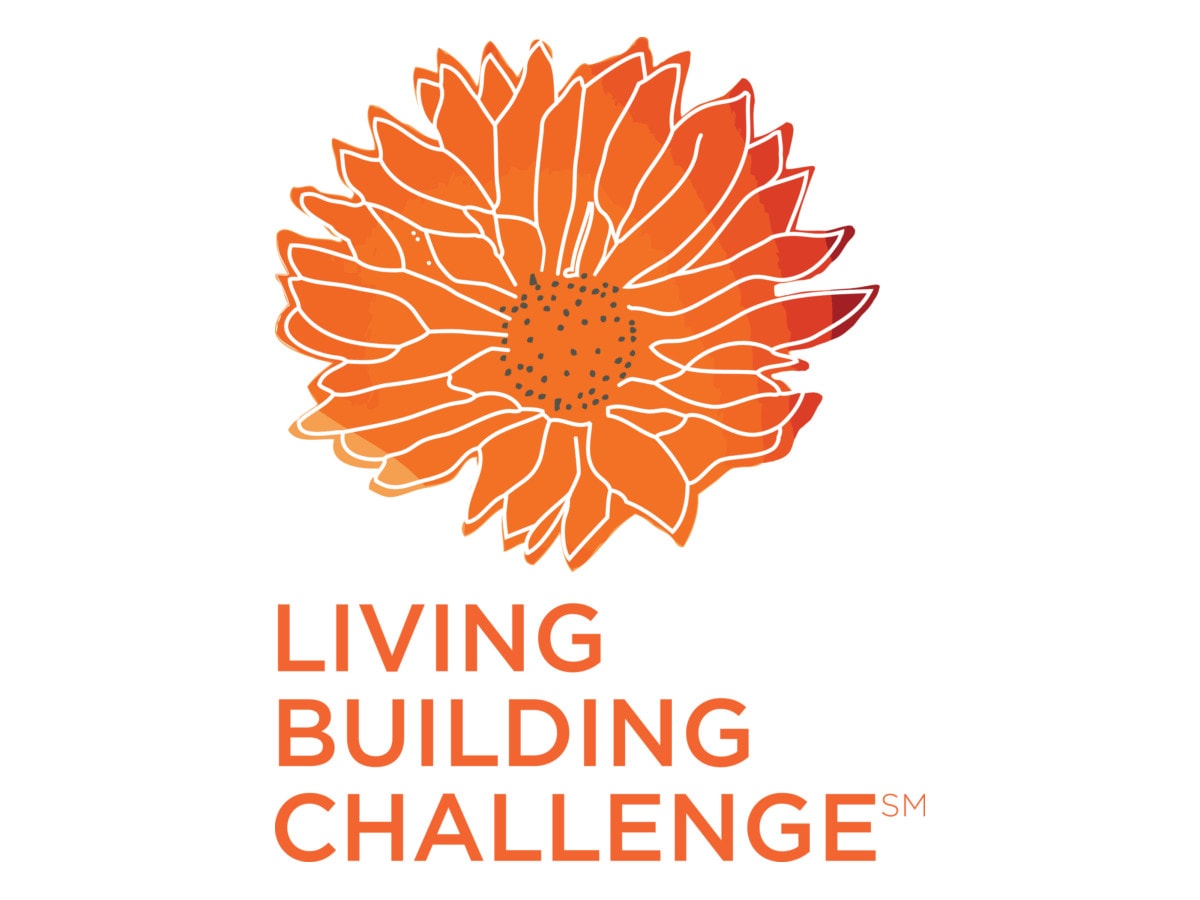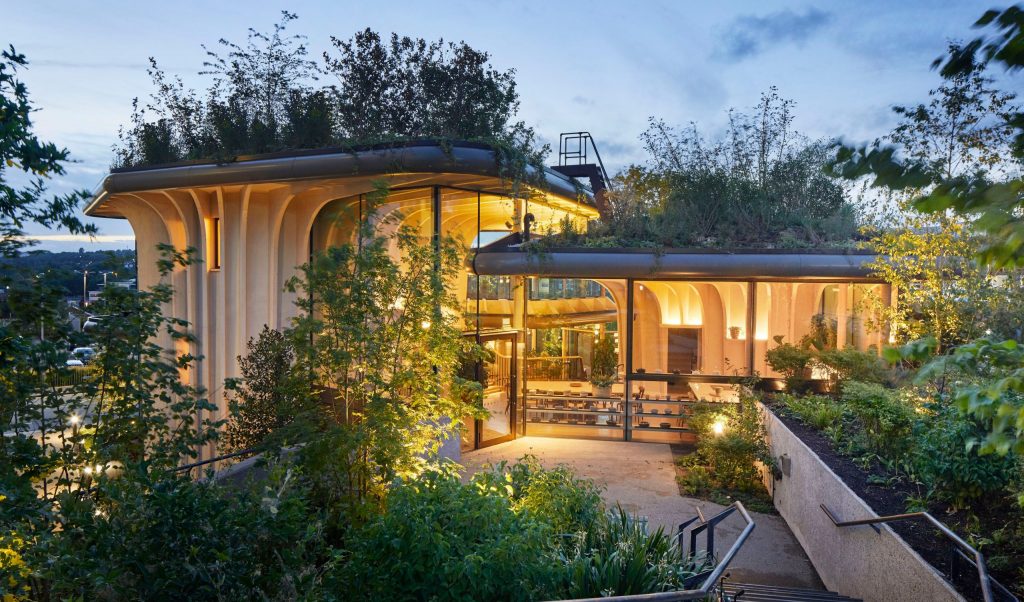As sustainable applied sciences develop alongside individuals’s wishes to reside extra sustainably, individuals have begun turning to their houses to cut back their carbon footprints, However have you ever ever puzzled in case you might construct a house that wasn’t simply ‘much less dangerous’, however as an alternative really restored the surroundings round it? You possibly can. Enter the Residing Constructing Problem.
The Residing Constructing Problem represents the top of sustainable improvement and promotes fairness, regeneration, and self-sufficiency. However what’s it? How do you certify your private home? Is it even attainable?
Whether or not you reside in a home in Bend, OR, or a dwelling in Seattle, WA, learn on to study all the pieces you might want to find out about Residing Constructing Certification.

What’s the Residing Constructing Problem?
The Residing Constructing Problem (LBC) is a inexperienced constructing certification program administered by the Worldwide Residing Future Institute (ILFI), and was launched in 2006 in Seattle, WA. This system continues to evolve as new analysis and expertise releases, and is at the moment on its fourth iteration (4.0).
The objective of the LBC is to encourage designers and owners to construct constructions and initiatives that contribute positively to their native surroundings. Buildings obtain this by mimicking the ecosystem round them from when earlier than the location was developed, making a regenerative and sustainable constructed surroundings.
Residing Constructing Problem Petals
The Residing Constructing Problem organizes its necessities into seven efficiency areas referred to as Petals. Every Petal is additional divided into Imperatives (20 whole), which tackle particular subjects associated to that Petal. Right here’s a quick abstract of the seven Petals.
1. Place
This Petal focuses on the placement of the challenge and its relationship to the encircling neighborhood and ecosystem. It consists of imperatives resembling habitat alternate, city agriculture, and applicable siting.
2. Water
The Water Petal emphasizes reaching a water stability inside the constructing’s website. Because of this a house or constructing ought to meet all its water wants by means of captured precipitation or recycled water, and handle its wastewater onsite.
3. Power
100% of the challenge’s power should come from on-site renewable power on a internet annual foundation, selling self-sufficiency and lowering the constructing’s environmental influence. This typically consists of putting in photo voltaic panels, small wind generators, and different renewable power sources.
There aren’t particular necessities for power per sq. foot, however the LBC insists {that a} constructing generate 105% of its power wants.
4. Well being and happiness
This Petal acknowledges the significance of making environments that optimize bodily and psychological well being and well-being. It consists of imperatives associated to indoor air high quality, biophilic environments, and selling bodily exercise.
5. Supplies
It’s important to encourage utilizing supplies which are non-toxic, clear, and socially equitable. The Supplies Petal requires initiatives to make use of protected and sustainable supplies, and bans using supplies which have destructive environmental impacts or comprise hazardous substances. The LBC has a “Crimson Listing” that comprises a catalog of their banned supplies and a “Watch Listing” of presumably problematic supplies.
6. Fairness
The Fairness Petal encourages social fairness and human rights inside the constructing’s sphere of affect. This consists of facets resembling human scale and humane locations, common entry to nature and neighborhood providers, and equitable funding.
7. Magnificence
This Petal is in regards to the aesthetic side of buildings and websites, recognizing that buildings ought to delight and encourage. The Magnificence Petal insists that buildings incorporate design options supposed solely for human delight, serving to to attach individuals to the surroundings in a significant manner.

Residing Constructing Problem for owners
Whereas sometimes for business and public buildings, the LBC certifies houses as effectively. Nevertheless, the LBC is extraordinarily strict, so it may be time-consuming to design and construct a certifiable dwelling. Because of this, solely 4 residences within the US have obtained full certification (fulfilled all seven petals).
Not like different inexperienced constructing requirements that may be primarily based on projections and simulations on the design stage, LBC certification relies on precise, confirmed efficiency after the constructing has been in operation for at the very least 12 consecutive months. There are 4 steps to receiving certification:
As sustainable expertise and methods advance, price and constructing time ought to fall. The objective of the LBC is to advertise sustainable and regenerative constructing practices, making them extra accessible and inexpensive for all.
How do you certify your private home?
The Residing Constructing Problem certification course of is similar for every type of buildings, together with homes. Nevertheless, as a result of houses are typically smaller and don’t have the identical budgets as massive business buildings, it may be tougher for owners to satisfy each requirement.
Right here’s a breakdown of how you can certify your private home by means of the LBC:
- Registration: Begin by registering your challenge with the Worldwide Residing Future Institute. You want a premium membership to register, which prices between $50-$250
- Design: Subsequent, in case you’re aiming for full certification, plan and design your private home in response to the LBC’s seven Petals and twenty Imperatives. This can seemingly require working with architects, engineers, and contractors who’re skilled with sustainable building and accustomed to the LBC. Bear in mind, the LBC requires that every one facets of the challenge, from the location option to the power methods to the constructing supplies, adjust to their requirements.
- Building: Assemble your private home in response to the design’s plans. Doc your progress and collect proof of compliance with every of the LBC’s necessities. This may embody photographs, receipts, contracts, and different paperwork that may confirm your claims.
- Efficiency monitoring: After building is full and also you’re all moved in, you might want to undergo a 12-month efficiency interval. Throughout this time, you accumulate knowledge and exhibit that your private home operates as designed and promised to the ILFI.
- Audit and certification: As soon as your 12-month efficiency interval is over, submit your documentation and knowledge to the ILFI. An LBC Prepared auditor will then overview it to confirm compliance with all of the problem’s necessities. If your private home meets the entire necessities, you’ll be awarded LBC certification. If it solely receives three out of seven Petals or simply achieves net-zero power use, it can obtain separate certifications.
Certification ranges
Full certification is extremely troublesome, so the LBC has three ranges {that a} dwelling or constructing can obtain.
- Full certification: Full certification is awarded to houses and buildings that meet the necessities of all seven Petals.
- Petal certification: Given to initiatives that fulfill the necessities of three Petals, together with at the very least considered one of both Water, Power, or Supplies.
- Web-zero power constructing certification: Given to initiatives that obtain internet zero power however don’t meet all the necessities for Full or Petal certification.
The ILFI additionally provides extra certifications for homes, merchandise, and full communities.
Suggestions for owners striving for LBC certification
Even in case you don’t obtain full certification, utilizing LBC’s tips can dramatically cut back your carbon footprint and create a sustainable, self-sufficient, stunning dwelling. Moreover, the ILFI provides different certifications such because the Residing Dwelling Problem, which is perhaps a extra possible choice for some individuals.
Additionally, one of the troublesome Petals to satisfy is power use. An excellent tip is to scale back the general quantity of electrical energy your private home requires and restrict your utilization, as an alternative of merely putting in extra renewable expertise.

Execs and cons of the Residing Constructing Problem for owners
Whereas there are various benefits to pursuing LBC certification to your dwelling, there are a variety of challenges and potential drawbacks. Right here’s a abstract of the primary execs and cons:
Execs
- Sustainability: LBC-certified houses are extremely sustainable. They produce all of their very own power with renewable sources, deal with all water on website, and are constructed utilizing non-toxic, locally-sourced supplies. This reduces their environmental footprint and contributes positively to their native ecosystems.
- Well being and well-being: LBC houses are designed with occupants’ well being and well-being in thoughts. They use non-toxic supplies, embody biophilic components that join occupants to nature, and promote lively, wholesome existence.
- Utility financial savings: By producing their very own power and managing their very own water, LBC houses can cut back and even get rid of utility payments. This may result in vital long-term financial savings.
- Resilience: LBC houses are designed to be resilient, with options resembling on-site power and water methods that permit them to function independently of municipal utilities. This is usually a main benefit within the face of energy outages, water shortages, or different disruptions. LBC houses additionally often final far longer than non-certified houses.
Cons
- Price: Pursuing LBC certification may be costly. The price of implementing renewable power methods, superior water remedy methods, and non-toxic supplies may be greater than conventional constructing strategies. Moreover, paying for specialised design and landscaping, and useful resource monitoring may be expensive and time-consuming. Nevertheless, whereas the associated fee may be greater upfront, sustainable supplies are solely marginally dearer, and you’ll seemingly save an enormous quantity on utilities over time
- Regulatory limitations: In lots of areas, native constructing codes and laws don’t permit some methods that LBC certification requires. This may make it troublesome and even unattainable to implement sure options of an LBC dwelling, resembling composting bathrooms or on-site water remedy methods.
- Technical challenges: Some components of the LBC, resembling reaching net-zero power or managing all water on website, may be technically difficult, significantly in sure climates or places. You’ll seemingly need to work with specialists to discover a answer, or select one other location fully.
- Availability of supplies: Sourcing non-toxic, domestically sourced supplies may be troublesome relying on the placement and materials. Be sure that to do your analysis earlier than committing to certification.
Last ideas
There are a lot of inexperienced certification packages that you need to use to assist construct a sustainable dwelling, all of which goal to scale back your carbon footprint. The Residing Constructing Problem is among the strictest on the planet and promotes lasting, helpful constructing design.
For owners keen to undertake its rigorous certification course of, it provides the chance to create a regenerative dwelling, contributing positively to its native ecosystem and selling the well being and well-being of their household. Nevertheless, pursuing certification additionally comes with its share of challenges, together with time, cash, supplies, and technical difficulties.
Finally, whether or not the Residing Constructing Problem is best for you is dependent upon your private targets, sources, and dedication to sustainability. Even in case you determine to not pursue full certification, the rules and practices of the LBC can present suggestions and methods for making a sustainable, wholesome, and resilient dwelling.
